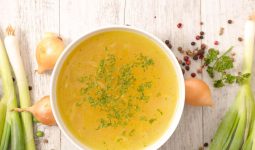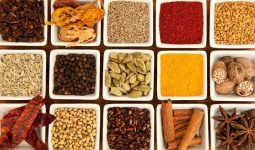Your farmers market or neighborhood shop could offer different types of bananas if you’re fortunate enough to reside in a region where they can be grown.
Those who don’t live in more tropical climates probably think this kind of variation is crazy, but it’s something to look forward to when you check it out.
All bananas have a similar texture that is somewhat starchy. They have a taste that is somewhat sweet compared to other tropical fruits and can continue ripening after being removed from the tree.
Bananas are tropical fruits, so it’s best to keep them at room temperature, where they’ll continue to mature naturally because they don’t like the refrigerator’s coolness.
Just put them in a paper bag to speed up the process. Below are the different types of bananas.
1. Baby Banana
Lady’s Finger bananas are another name for baby bananas. Compared to the more well-liked Cavendish bananas, they are smaller and sweeter.
They are often consumed raw, much like Willian bananas. Many parents purchase these for their children because they make excellent portion-controlled snacks.
The typical length of baby bananas is 3 inches, and they have a bright yellow color. They have a sweet, honey-like taste and a creamy texture.
2. Saba Banana
Saba bananas are generally used in cooking and are native to the Philippines. Although they are a staple in Philippine cuisine, they are sometimes consumed raw. Their leaves and trunk have a dark blue-green color and grow enormous, sturdy pseudostems.
The thick skin and distinctive angular shape of the bananas make international shipping of them quite simple.
They are comparable in nutritional value to potatoes and are used as components in recipes like ginanggang, turrón, and halo-halo. Saba bananas are also a key component in the well-known sauce known as banana ketchup.
3. Goldfinger Banana
The Goldfinger banana is one of the best different types of bananas. It was created by Phillip Rowe and Franklin Rosales as a pest-resistant banana and is usually farmed in Honduras. Although it is commonly eaten after cooking, it is edible when green.
When ripe, it is often consumed in Western regions and is available in most markets in North America and Europe.
It was created through a typical hybridization method using the gene pool of more than 800 distinct Southeast Asian growers of bananas.
4. Apple Banana
Although the name “apple banana” is used to describe various varieties with an apple-like taste, it also refers to a particular type.
These bananas, native to Hawaii‘s tropical rainforest area, are called Candy Apple Bananas.
They are renowned for their sweetness and have firm skin with pink undertones. Since they don’t brown as soon as other bananas, they make a great addition to snacks and sweets and are delicious and eaten fresh.
5. Burro Bananas
Depending on the region, burro bananas go by various names, including horse, Orinoco, and hog. In terms of flavor, they are one of the most distinctive different types of bananas due to their lemony, acidic quality. They are squat or somewhat square.
Burro bananas have a center that may have a little crunchy feel and are yellow with black patches. In tropical and subtropical regions, they are accessible all year round. They include fiber, magnesium, potassium, and vitamins B and C.
When they are completely ripe, they are eaten raw; when they are underripe or green, they are eaten like plantains.
They are used as savory components with chiles, pig, chicken, lines, berries, cream, and many other things in Filipino, Thai, Latin, Indian, and Caribbean cuisines.
6. Manzano
Due to their apple-like taste, these bananas were given the name “Manzano,” which is Spanish for “apple trees.”
Additionally, they go by the name “apple bananas.” Their thick, golden skin becomes black as they mature, which is also when they taste the best.
They are short and plump. They are mostly cultivated in Mexico, the Caribbean Islands, and Central and South America.
These bananas may be eaten raw or used as valuable ingredients in desserts. A daily serving of Manzano, which are high in potassium, fiber, and vitamin C, would benefit health.
7. Blue Java Bananas
Due to its texture and sweet vanilla taste, the Blue Java banana is known as the Ice Cream Banana. They are a tough, cold-tolerant fruit that is sweet and scented like bananas.
Blue Java Bananas are one of the different types of bananas that can withstand wind, which makes them a very well-liked fruit in colder climates.
They take between 15 and 24 months to bloom and are well-known for tasting like vanilla custard. Although they may also be cooked, people typically like them raw. When they are ripe, they have a distinctive blue color.
8. Red Bananas
A common fruit with reddish-purple skin is a red banana. They have a variety of sizes and flesh that is either light pink or orange in color.
Red bananas are significantly sweeter and softer than Cavendish bananas and have a faint raspberry taste.
They are mostly grown in the United Arab Emirates, South America, Asia, and East Africa. The area of Central America where red bananas are most popular is where they are consumed raw or in juices.
9. Praying Hands
They were given this name because of the way they appeared (two adjacent “hands” remained joined together), like a pair of prayer hands. These bananas start green and become yellow with black patches as they mature.
Their starchy, yellowish-white flesh has a solid texture and a taste that is somewhat sweet and vanilla-like.
Even though the best time to prepare them is when they turn yellow, they may be stir-fried, roasted, turned into chips, or put into rolls. Overripe fruits grow mushy and are suitable for eating uncooked.
10. Pisang Raja
The Musa Belle bananas sometimes called Pisang Raja bananas, are very well-liked in Indonesia.
Due to their delicious and firm texture, they are used to produce the well-known street snack Pisang Goreng (banana fritters).
They come in various colors, from yellow to orange, and have a sweet, honey-like flavor. The Pisang Raja banana has a superb flavor, but it is not often consumed outside of Indonesia, and it is quite difficult to get into local stores there.
11. Cavendish
Most American grocery shops sell this type of banana, the most well-known and well-liked of all bananas.
They go through many ripening phases: green at first, then a light yellow shade, then a deep yellow color with some brown patches, and lastly, becoming completely brown when they soften.
These bananas may be roasted, cut into salads, consumed raw, and used to make fruit compotes. They are sweet and creamy.
Bananas that are too ripe are often refrigerated and used to make smoothies and banana bread. The two outstanding cultivars among its many are Gran Nain and Dwarf Cavendish. This is one of the best different types of bananas.
12. Gros Michel
These thick-skinned, greenish-yellow bananas, also known as Big Mike, Banano, and Guineo Gigante, were very popular until the 1950s.
After the plants had Panama disease, their output gradually decreased, and the Cavendish finally took their place.
They make a great banana for pies since they are sweet, creamy, and strongly scented. They are now barely accessible, nevertheless.
13. Dwarf Cavendish Bananas
The Dwarf Cavendish Banana is one of the best different types of bananas. It gets its name from the pseudostem’s height rather than the fruit’s size.
When they are young, they have purple or maroon dots, and those spots become more yellow as they mature.
The most popular variety of Cavendish bananas is this one. Due to their small petioles, their leaves are wind-resistant, sturdy, and simple to handle while growing.
Since each plant can produce up to 90 fingers at once, they are ideal for mass – production.
14. Plantains
Due to their high starch content, plantains are often consumed as vegetables. Plantains undergo the same color changes as bananas when allowed to mature. They are often used in savory meals since they are never as sweet as bananas.
Depending on their intended usage, bananas and plantains are categorized differently in Europe and North America.
Plantains and bananas are seen as distinct food commodities in the American market. The plantain has a larger starch content than the banana but isn’t as sweet. The majority of the time, unlike bananas, they are cooked rather than eaten raw.
15. Mysore
Mysore is one of the amazing different types of bananas. Locally known as Nanjangud Banana or Nanjangud Rasabalehannu, it originated in Chamarajanagar and Mysore in Karnataka.
These short, thick bananas with thin skin have a sweet flavor with tangy undertones. In addition to being eaten raw, their distinctive taste has made them a common ingredient in sweets.
Since the banana’s unique aroma and flavor came from the black soil in Nanjangud and the area around it, it was granted GI status in 2005 and is now only allowed to be grown there.
There are over 1,000 different types of bananas, about half of which are inedible. The most common type of banana you’d find in your local food store is a Cavendish, but it wasn’t always this way.








